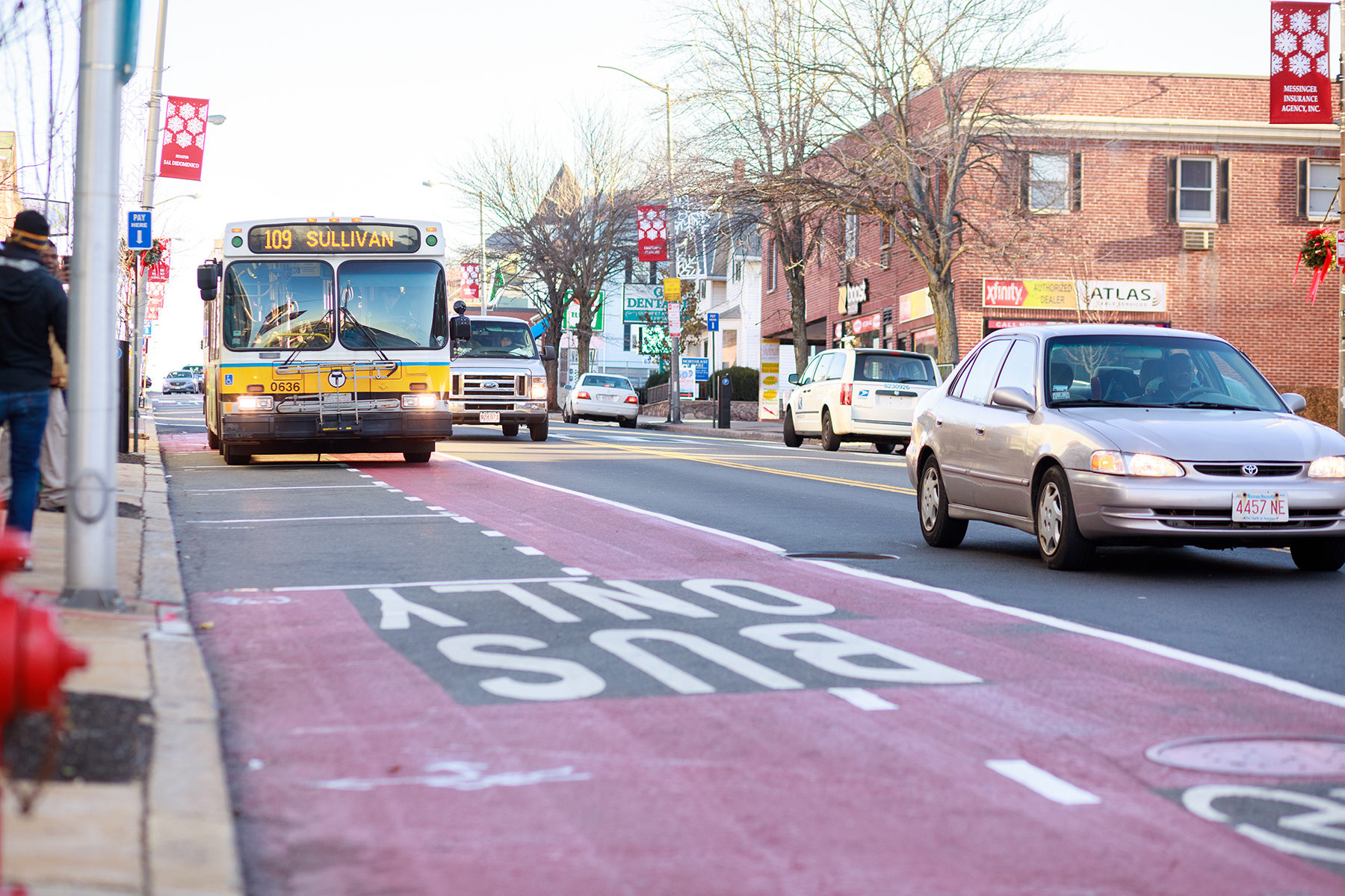Transportation revolution
I asked Morgan, a five-year resident of Everett, about the changes in her city, and she singled out the repaved roads (and a Dunkin’ Donuts that had been relocated inside the casino). It’s true that streets are smoother for drivers, but they’re also significantly better for buses and bikes.
Mayor DeMaria is hyperaware of two things: that many residents “rely entirely on [a] transit system that is frequently unreliable” and that it “isn’t feasible to have a growing city where everyone owns two or more cars and has limitless parking everywhere.” It’s given Jay Monty, Everett’s transportation planner, an ability to maximize the potential for city streets by making them more multimodal and to better support the most economically vulnerable residents that call Everett home.
Inspired by the bus rapid transit (BRT) he saw on a visit to Mexico City and with local support from the Barr Foundation and the Institute for Transportation and Development Policy (ITDP), Monty has been iteratively improving the bus corridor along Broadway that serves five bus lines and as many as 10,000 passengers daily. Beginning in December 2016, the City took away parking on one side of the street and used traffic cones to create the first bus lane prototype. The cones were replaced by paint, and eventually the entire lane was painted red to delineate the bus-only lane. Traffic signals have also been upgraded to give priority to approaching buses.
Improvements such as these are now being made elsewhere in the Boston region and bear a physical resemblance to the Silver Line on Washington Street installed in 2002—but Everett has gone further. The City is pursuing Gold Standard BRT, which includes better protection for the bus lanes and paying fares before boarding. With a Spanish firm, the City designed and installed “level boarding platforms” that extend up from the sidewalk and allow people to walk, or roll, directly onto the bus in order to improve accessibility and speed the boarding process.
None of these changes came with formal public meetings. Monty noticed that “evening public meetings [were] not a representative sample”—the same handful of people showed up at traditional hearings for projects with a consistent list of complaints. Instead, he has used the pilot projects coupled with surveys, measurable travel-time improvements, and continued upgrades as the community process, thereby generating support well beyond what a whole series of meetings could have produced.
Partnerships with regional advocacy groups such as the LivableStreets Alliance, as well as ITDP, has enabled the City to do more outreach, collect input, and collaborate across municipal borders. Meanwhile, working with Adrian Gill at Ad Hoc Industries, they’ve created a branded look and feel along with creative ways to build momentum for the bus lane. Ad Hoc made a film of the crew painting the “red carpet” and organized a “flower bomb” that turned an ordinary bus stop into a bucolic garden experience. Gill says he is inspired by the “entrepreneurial attitude” of the mayor and admires his leadership style as being “out ahead of the average resident.”






